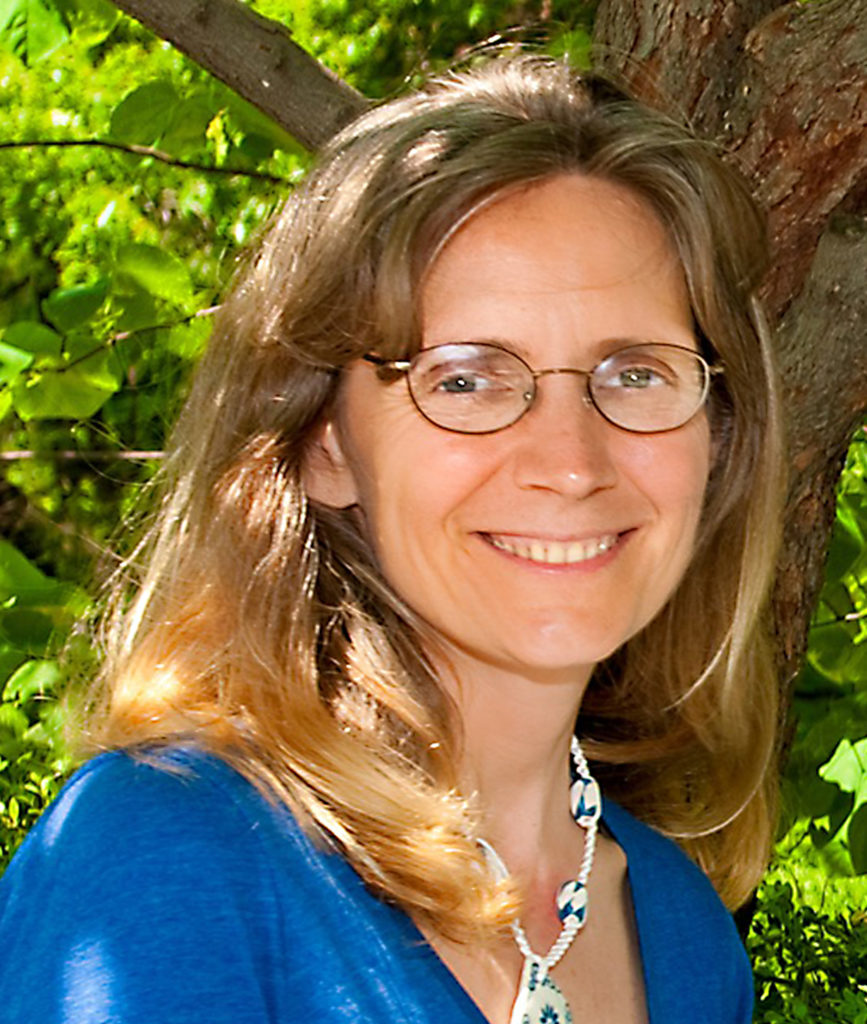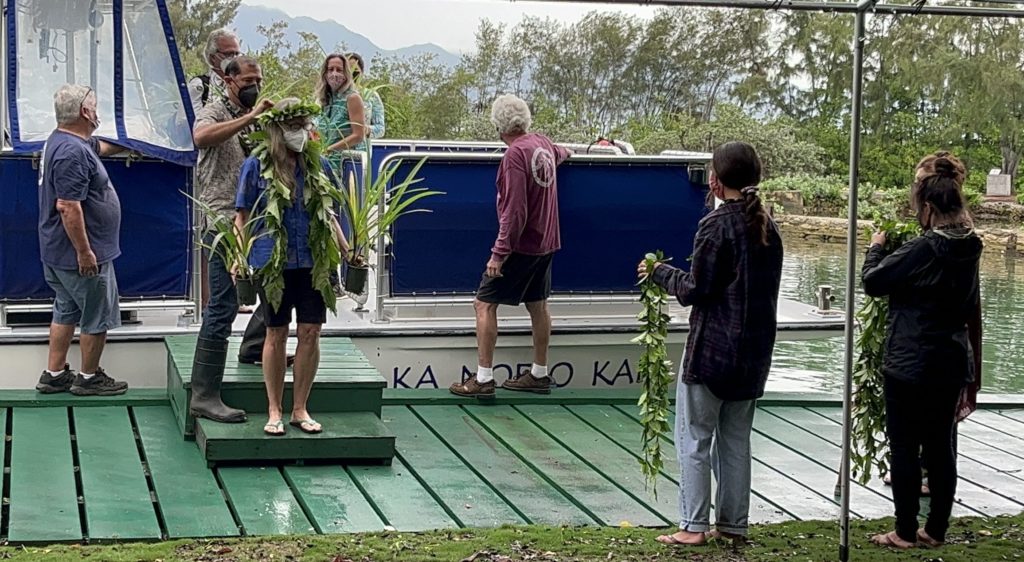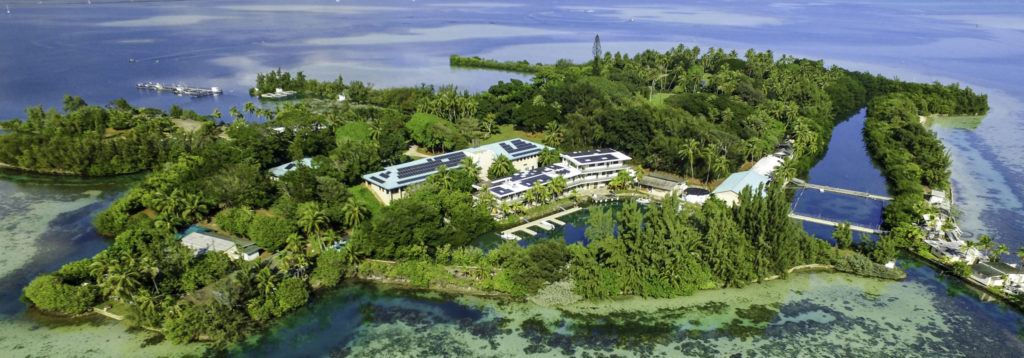HIMB’s New Director Bridges Biological, Social and Cultural Studies

ELEANOR STERLING FELL IN LOVE WITH LANGUAGES at an early age and had intended to study linguistics when she arrived at Yale University. However, through an undergraduate course in physical anthropology, Sterling discovered another love — a love of science.
“Up to that point, I really didn’t believe that the sciences were for me,” said Sterling who has since studied over ten languages. “I found out that I absolutely loved it and became excited about what science was and could become.”
Fortunately, that turn of events on the New Haven, Connecticut campus would eventually lead Sterling to the University of Hawai‘i at Mānoa (UH Mānoa), where she became the new director of the Hawai‘i Institute of Marine Biology (HIMB) in January 2022.
Prior to arriving at UH Mānoa, Sterling spent 26 years at the American Museum of Natural History in New York City, most recently as Jaffe Chief Conservation Scientist. A highly regarded researcher and conservationist, Sterling’s vast expertise ranges from conservation biology to international policy to the ecology of endangered species and ecosystems to the confluence of language, culture, and biodiversity to strategic planning and evaluation. She has spent all of her academic career balancing biological, social, and cultural studies.

Sterling learned about the importance of listening to other ways of knowing starting in Madagascar, where she has worked on and off since 1983 to better understand the links between biological and cultural diversity. She lived for several years in a tent, without electricity on an uninhabited island in order to study a nocturnal lemur — the aye-aye — that was thought to be one of the most endangered primates in the world. She not only studied its ecology and behavior, but also how aye-ayes fit within the knowledge systems of the different ethnic groups within Madagascar.
“I believe that understanding the linkages between biological and cultural diversity — taking what some call a biocultural perspective — is crucial to effective management of healthy human and non-human communities,” said Sterling, who also worked with local scientists and educators to rewrite the national primary school science curriculum to provide up-to-date science on local biodiversity.
Armed with lessons learned from Madagascar, Sterling later traveled to Vietnam to lead an initiative to help inform decision makers on the placement of nature reserves to maintain or increase biodiversity. Made up of a multi-disciplinary team of scientists and educators, the group also addressed the potential impact of the proposed reserves on local communities. While there, Sterling also created multiple opportunities for young scientists to learn and share, many of whom are now leaders in their respective fields. To honor her investment in developing the capacity of young scientists in the country, herpetologists named a rare toothed toad after her called, Sterling’s Toothed Toad (Oreolalax sterlingae), a lovely brownish-gold toad that has only been seen by scientists at the summit of the highest mountain in Vietnam.
Sterling is no stranger to Hawai‘i, as she came to the state decades ago to visit with her aunties on her father’s side and subsequently worked here and elsewhere in the Pacific on sea turtle conservation initiatives. Her most recent work focuses on how local perceptions and values of health and well-being in Pacific Island countries differ from those promoted at international levels such as the Sustainable Development Goals.
“This work informs management of marine and coastal systems worldwide as well as providing the framework for sustainable development at community, national, regional, and global levels,” said Sterling. “My UH Mānoa colleagues were strong collaborators in the Pacific-based initiatives and working more closely with them drew me to the HIMB position.”

Sterling came to HIMB because of her admiration for the faculty’s remarkable depth and breadth in marine research and education and because of UH Mānoa’s pledge to become a Native Hawaiian place of learning. She is interested in exploring how to promote HIMB as a place where people of diverse backgrounds, perspectives, and ways of knowing can work together to foster resilience at the local and global scales across marine and coastal systems. HIMB’s unique physical setting, with ready access to reef and coastal systems and its emerging collaborations with local Hawaiian communities on indigenous marine and coastal resource management, make it ideal for bridging across biological and social systems.
Sterling envisions HIMB being part of University of Hawai‘i’s efforts to serve as a hub connecting the Pacific Rim and Asia to the United States, particularly in exploring the links between biological and cultural diversity.
“Hawaiians and other Pacific Islanders have much to teach the world about health and resilience in the face of change, whether biological, cultural, social, or economic,” said Sterling. “There are few places in the world better suited to cutting edge science and education and exploration of multiple knowledge systems, of multiple ways of knowing, of what that means for basic understanding of the world and for practical application of knowledge to decision making and action.”
Sterling greatly values the ongoing research and education at HIMB and hopes to encourage more cross-disciplinary work and interaction within HIMB, across the UH System, and beyond. She envisions supporting artists and practitioners in residence at HIMB, creating a convergence zone for ideas and for synthesizing across multiple knowledge systems and re-envisioning the role and potential of a globally recognized center of excellence for marine studies and education. Sterling believes that these efforts to make connections across disciplines and viewpoints are how humankind will work to address the major challenges that it faces today including climate change, biodiversity loss, and erosion of knowledge systems.
“Eleanor Sterling checks all the boxes of HIMB director with her expertise in biological conservation, scientific research, environmental education, and program administration,” said Professor David M. Karl, world-renowned UH oceanographer and chair of the search committee. “She is the embodiment of interdisciplinarity and we are pleased to have her as part of our UH Mānoa research ‘ohana (family).”

